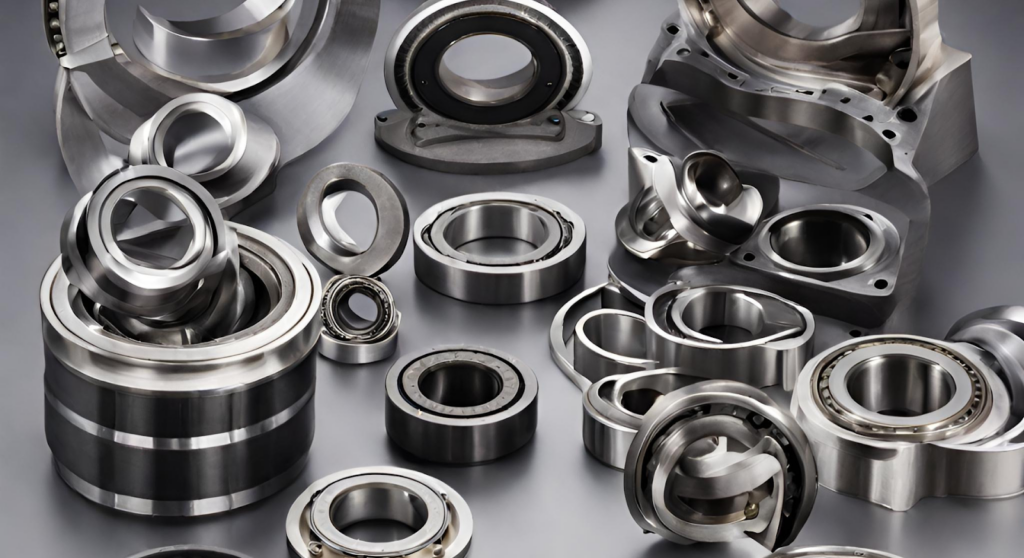Annoying noise from your wheel hub bearings? What’s the most common cause? Addressing this issue is key to a quiet ride.
Sealing noise in integrated wheel hub bearings often stems from improper installation or seal damage[^1].
Proper installation and high-quality seals resolve the problem. Enjoy a smooth, silent drive.
Let’s explore the #1 cause of sealing noise in integrated wheel hub bearings. I will share insights based on my experience with bearing systems. I will also provide practical solutions.
What are Integrated Wheel Hub Bearings?
What exactly are integrated wheel hub bearings[^2]? How are they different? Understanding their design is essential.
Integrated wheel hub bearings combine the bearing, hub, and flange into one unit. They simplify installation and improve stiffness. They’re common in modern vehicles.
Integrated wheel hub bearings are compact and efficient. They combine the bearing, hub, and flange into a pre-assembled unit.
This design simplifies the installation process because it reduces the number of parts. One benefit is the increased stiffness and stability that the integral unit gives to the assembly.
Integrated wheel bearings are common in modern cars and trucks for smooth and reliable performance. These bearings are similar to the bearings we use in our molds. Precision prevents inconsistent product quality.
The #1 Cause: Improper Installation and Seal Damage
What’s the main culprit behind sealing noise[^3]? What installation errors lead to problems? Preventing mistakes is crucial.
Improper installation is the primary cause. This includes:
- Damaged seals during installation
- Incorrect torque on the hub nut
- Contamination entering the bearing
Careful installation prevents these issues.
Improper installation is the #1 cause of sealing noise in integrated wheel hub bearings. Seals get damaged during installation.
This can happen when using the wrong tools or applying excessive force. Incorrect torque on the hub. Overtightening or undertightening can cause premature wear.
Contamination by dirt, debris, or moisture getting into the bearing can cause accelerated corrosion.
One method for quality assurance testing is to check each step in the assembly line to ensure no steps were skipped. I also found this to be true for mold design.
How to Fix Sealing Noise Issues
How can you fix existing sealing noise[^3]? What steps should you take? Solving the problem restores a quiet ride.
To fix sealing noise[^3]:
- Inspect the bearing for damage and contamination
- Replace damaged seals with high-quality parts
- Use proper installation techniques
- Apply the correct torque to the hub nut
Follow these steps for a successful fix.
If you’re experiencing sealing noise in your integrated wheel hub bearings, there are steps you can take to resolve the issue.
First, you need to inspect the bearing. Do this to look for signs of damage, wear, or contamination. If the seals are damaged, replace them with high-quality OEM or equivalent parts.
Proper installation techniques are essential. Use the correct tools. Do not apply excessive force. Apply the correct torque to the hub nut.
This prevents over-tightening or under-tightening. I have found that when dealing with seals, it’s better to do it right the first time.
Choosing High-Quality Replacement Seals
Why are high-quality seals[^4] important? What features should you look for? Selecting the right seals ensures long-term performance.
High-quality seals offer:
- Superior materials for better durability
- Precise fit to prevent leaks
- Resistance to heat and chemicals
Using high-quality seals is essential. It ensures long-lasting performance and prevents future sealing noise issues.
Superior materials are more resistant to wear, heat, and chemicals. Look for seals made from high-quality rubber compounds.
They maintain their flexibility and sealing properties over time. A precise fit is crucial for preventing leaks and contamination.
Choose seals specifically designed for your vehicle and wheel hub bearing assembly. Just like molds, the more precision a part has, the better it performs.
Improper installation and seal damage are major causes of noise. Proper fixes result in safe driving.
[^1]: Explore the consequences of seal damage to ensure your vehicle runs smoothly and quietly.
[^2]: Learn about integrated wheel hub bearings to appreciate their design and advantages in modern vehicles.
[^3]: Understanding sealing noise can help you identify and fix issues in your vehicle’s wheel hub bearings.
[^4]: Find out why investing in high-quality seals is crucial for the longevity of your wheel hub bearings.

